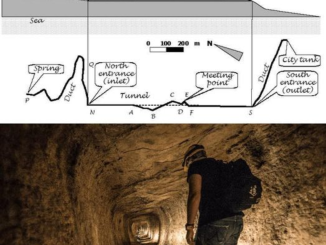Astrobiology, the study of life beyond Earth, has captured the imagination of scientists and space enthusiasts for decades. The question of whether life exists elsewhere in the universe is a profound and enduring one. In this blog post, we will delve into the field of astrobiology and the relentless search for alien life, exploring the science, theories, and the enduring mysteries surrounding this captivating subject.
I. Defining Astrobiology: The Science of Extraterrestrial Life

Astrobiology is a multidisciplinary field that combines aspects of biology, chemistry, physics, and astronomy to investigate the potential for life beyond Earth. Its primary focus is on understanding the conditions required for life to thrive and identifying environments in the universe where life might exist. Astrobiologists explore extreme environments on Earth, such as deep-sea hydrothermal vents and acidic hot springs, to gain insights into the possibility of life in extraterrestrial settings.
II. The Search for Habitable Zones

One of the central tenets of astrobiology is the search for habitable zones, regions within our galaxy and the universe where conditions may be suitable for life. Researchers look for exoplanets within the “Goldilocks zone” or habitable zone of stars, where conditions are just right for liquid water to exist. Water is considered a critical ingredient for life as we know it, making these zones prime candidates for potential habitability.
III. Extremophiles and the Boundaries of Life

Astrobiology’s quest to understand the boundaries of life has led to the study of extremophiles, organisms that thrive in extreme conditions. These life forms, which endure extremes of temperature, pressure, radiation, and acidity, provide valuable insights into the adaptability of life. The existence of extremophiles on Earth suggests that life might endure in seemingly inhospitable extraterrestrial environments.
IV. The Search for Extraterrestrial Life

Astrobiology’s ultimate goal is to detect evidence of extraterrestrial life. This quest encompasses a wide range of methods and approaches, from the search for microbial life on Mars to the study of potential habitable exoplanets. Scientists also explore the possibility of life in the subsurface oceans of icy moons like Europa and Enceladus. The search for alien life is a multidimensional endeavor that includes the study of biosignatures, such as chemical or geological indicators of life, and the development of missions to investigate distant worlds.
The Enigma of Alien UFOs

Astrobiology and the search for alien life in the universe continue to captivate scientists and space enthusiasts. While our knowledge of life beyond Earth remains limited, the pursuit of this profound question inspires a relentless search for answers. Astrobiology represents a bridge between the realms of science fiction and scientific discovery, challenging our understanding of the cosmos and our place within it.
As we contemplate the mysteries of astrobiology and the enduring questions they raise about the nature of life in the universe, we must also acknowledge the fascination with the unknown and the enigmatic world of alien UFOs. Whether we ultimately discover evidence of alien life or continue to explore the boundaries of life as we know it, the wonders and enigmas of the universe remind us that there are endless possibilities and discoveries waiting to be made.








